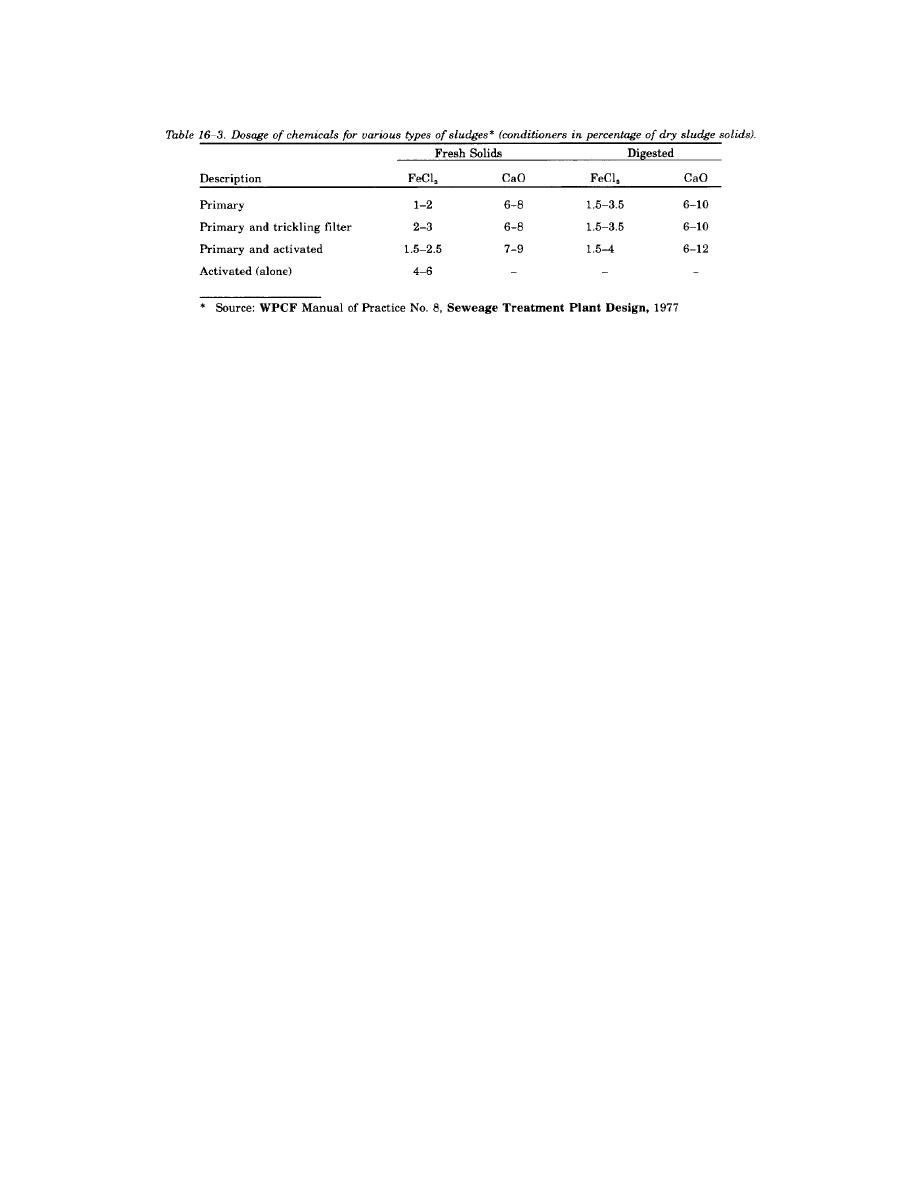
TM 5-814-3/AFM 88-11, Volume III
b. Physical conditioning. Physical conditioning is primarily by heat. Heat conditioning involves heating
at 350 to 390 degrees Fahrenheit for 30 minutes at 180 to 210 pounds per square inch gauge. Dewaterability
is improved dramatically and pathogens are destroyed as well. The main disadvantage is the return of high
biochemical oxygen demand loading to the wastewater stream.
16-5. Sludge dewatering.
Dewatering reduces the moisture content of the sludge so that it can more easily be disposed of by landfill,
incineration, heat drying, composting or other means. The objective is a moisture content of 60 to 80 percent,
depending on the disposal method. EPA Manual 625/1-82-014 provides information on the capabilities of
the various dewatering devices and a methodology for selecting the cost-effective device. Because all
dewatering devices are dependent upon proper sludge conditioning, a carefully designed chemical feed system
should be included as part of the dewatering facility.
a. Belt press filtration. Belt filter presses employ single or double moving belts to continuously dewater
sludges through one or more stages of dewatering. All belt press filtration processes include three basic
opera-tional stages: chemical conditioning of the feed sludge; gravity drainage to a non-fluid consistency;
shear and compression dewatering of the drained sludge. When dewatering a 50:50 mixture of anaerobically
digested primary and waste activated sludge, a belt filter press will typically produce a cake solids
concentration in the 18-23 percent range.
(1) Physical description. Figure 16-1 depicts a simple belt press and shows the location of the three
stages. Although present-day presses are usually more complex, they follow the same principle indicated in
figure 16-1. The dewatering process is made effective by the use of two endless belts of synthetic fiber. The
belts pass around a system of rollers at constant speed, and perform the function of conveying, draining and
compressing. Many belt presses also use an initial belt for gravity drainage in addition to the two belts in the
pressure zone.
16-4


 Previous Page
Previous Page
